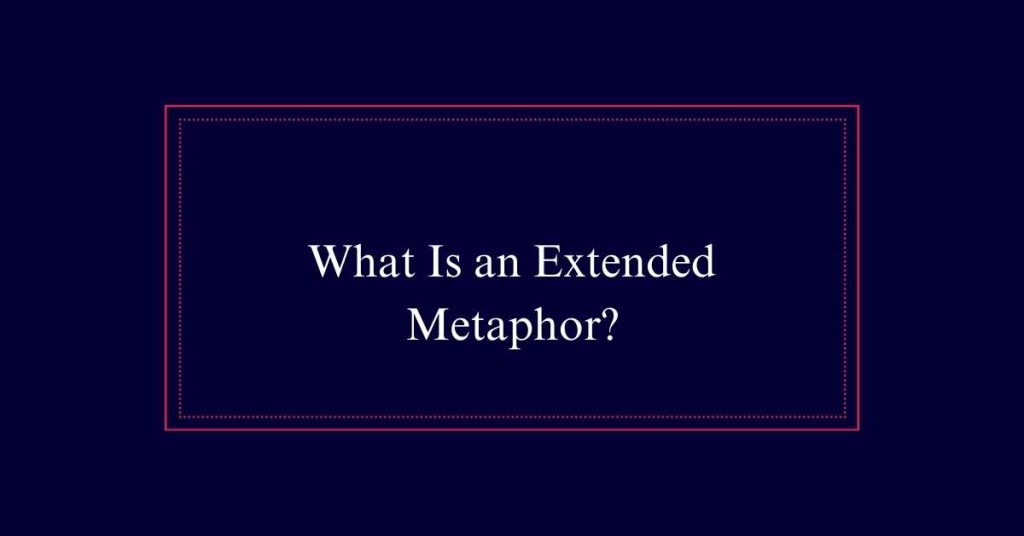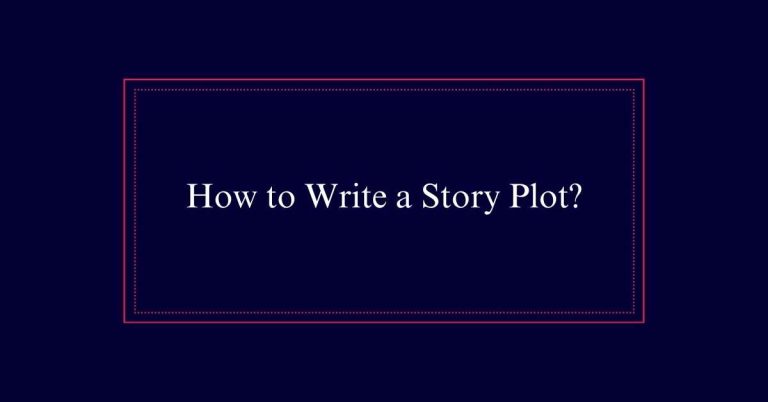What Is an Extended Metaphor?
An extended metaphor is a detailed and sustained comparison that extends over several sentences or an entire piece. It enriches the narrative by elaborating on the analogy, providing vivid imagery and deeper meaning. Commonly used in poetry, songs, and speeches, it helps to convey complex ideas in a relatable way. For instance, in Shakespeare’s “As You Like It,” life is compared to a play, with people as actors.
Understanding Extended Metaphors
Understanding extended metaphors involves recognizing how they expand a basic metaphor over several sentences to deepen meaning.
Unlike a simple metaphor that draws a direct comparison, an extended metaphor elaborates on the analogy, enriching the narrative.
For instance, consider the phrase ‘grad school is a marathon.’ This metaphor can be extended: ‘Good friends are the water breaks, and your professors are your coaches and trainers.’ Here, the metaphor is developed to convey the endurance and support involved in graduate studies.
Extended metaphors can span entire paragraphs or texts, engaging readers by providing a vivid and sustained comparison.
They are common in poetry, songs, and speeches, effectively connecting with audiences through layered meaning and imagery.
How Metaphors Work
To grasp how metaphors work, one must first understand the elements that make up a metaphor: the tenor and the vehicle. The tenor is the subject being described, while the vehicle is the imagery used to describe it.
For instance, in the metaphor ‘time is a thief,’ time is the tenor, and thief is the vehicle. This comparison suggests that time steals moments from our lives, adding depth and meaning to the statement. Metaphors rely on these elements to create vivid and relatable imagery, helping readers understand complex concepts easily.
Extending the Metaphor
An extended metaphor elaborates on a single metaphorical comparison across multiple sentences, enhancing its depth and resonance. Rather than delivering a quick comparison, it explores the metaphor in detail. This deepens the reader’s understanding and connection to the concept.

For example, if education is likened to a journey, the extended metaphor might describe the challenges as mountains, the teachers as guides, and the diploma as the destination. Each element adds layers of meaning, making the metaphor richer and more memorable.
Extending the metaphor allows writers to build a vivid, cohesive image that engages the audience. It transforms simple comparisons into complex, thought-provoking narratives, effectively conveying intricate ideas through imagery and symbolism.
Grad School Marathon Example
Imagine grad school as a marathon, where each assignment is a mile and every semester a grueling stretch of the race. This extended metaphor paints a vivid picture of the long, challenging journey. Just as marathon runners push through fatigue and obstacles, grad students navigate their coursework, research, and exams.
Good friends become the essential water breaks, offering support and encouragement. Professors act as coaches and trainers, guiding students with their expertise and feedback. The finish line represents graduation, a moment of triumph and relief.
This metaphor highlights the perseverance, dedication, and support systems required to succeed in grad school, making the abstract experience more relatable and tangible to the reader.
Types of Extended Metaphors
Extended metaphors come in various forms, primarily including allegories and conceits. Allegories use narratives to represent abstract ideas, often through characters, settings, and plots. An example is George Orwell’s ‘Animal Farm,’ which uses a farm to discuss political ideology. Allegories require readers to interpret the underlying meanings, connecting the narrative to broader themes.
Conceits, on the other hand, are intricate extended metaphors that offer unique perspectives. They often present surprising or complex comparisons, frequently found in Renaissance and metaphysical poetry. For instance, in T.S. Eliot’s ‘The Love Song of J. Alfred Prufrock,’ the comparison of life to a patient etherized upon a table challenges readers to see ordinary subjects in unexpected ways.
Allegory Explained
Allegory is a narrative technique that uses characters, settings, and plots to represent and discuss abstract ideas and themes. This method allows writers to convey complex messages through symbolic storytelling.
In an allegory, the narrative operates on two levels: the literal and the symbolic. The literal level tells the story, while the symbolic level explores deeper meanings.
A classic example is George Orwell’s ‘Animal Farm,’ which uses a farm and its animals to discuss the complexities of political systems. Characters and events in the story symbolize real-world issues and ideologies.
Allegory relies on readers to interpret these symbols, making it a powerful tool for exploring moral, social, and political themes without direct exposition.
Conceit in Literature
A conceit is an intricate and extended metaphor that offers a unique and often surprising perspective on a subject. Unlike simpler metaphors, conceits are elaborate and complex. They are typically used in Renaissance and metaphysical poetry to create startling or thought-provoking images.
For example, in T.S. Eliot’s ‘The Love Song of J. Alfred Prufrock,’ the poet compares the evening sky to ‘a patient etherized upon a table.’ This shocking image forces readers to view the sky in an entirely new way.
Conceits challenge readers to think deeply, making them an engaging literary device. They expand understanding by drawing unexpected connections between disparate ideas, thereby enriching the reading experience.
Structure of Extended Metaphors
While conceits offer intricate perspectives, understanding the structure of extended metaphors requires examining their key components: tenor and vehicle.
The tenor represents the initial concept or subject being described. The vehicle is the figurative comparison that transforms the statement into a metaphor. For instance, in the metaphor ‘a book is a conversation with somebody you’ve likely never met,’ the book is the tenor, while the conversation is the vehicle.
Extended metaphors function by extending this initial comparison across multiple sentences or even paragraphs, enriching the narrative. They maintain a clear relationship between tenor and vehicle throughout, allowing for deeper exploration of complex ideas and enhancing the reader’s engagement and understanding.
Poetry and Song Examples
Poetry and songs often employ extended metaphors to create vivid imagery and convey complex emotions. For instance, Emily Dickinson’s poem “Hope is the thing with feathers” uses an extended metaphor to liken hope to a bird that perches in the soul and sings continuously. This metaphor extends through the poem, illustrating hope’s persistence and resilience.
Similarly, in the song “Firework” by Katy Perry, the extended metaphor of a firework symbolizes the potential and brilliance within every individual. It runs throughout the song, encouraging listeners to recognize their own value and impact. These examples demonstrate how extended metaphors in poetry and music can deepen the audience’s understanding and emotional connection to the work.
Common Questions
Many people have questions about the nature and use of extended metaphors. Below are common questions and concise answers to clarify this literary device.
| Question | Answer |
|---|---|
| What is an extended metaphor? | It compares subjects figuratively over multiple sentences or paragraphs. |
| How does it differ from a standard metaphor? | It builds on an initial metaphor, elaborating it further. |
| What are common types of extended metaphors? | Allegory and Conceit. |
| Can you give an example of an extended metaphor? | “Grad school is a marathon, with good friends as water breaks and professors as coaches.” |
| Why use extended metaphors? | They create deeper connections and add complexity to the narrative. |
Frequently Asked Questions
How Do Extended Metaphors Enhance Storytelling?
Extended metaphors enhance storytelling by providing deeper meaning and connections. They allow writers to explore complex ideas through sustained comparisons, making abstract concepts more relatable and engaging for readers, consequently enriching the narrative experience.
Can Extended Metaphors Be Used in Everyday Conversation?
Yes, extended metaphors can be used in everyday conversation. They help convey complex ideas more vividly and memorably, making it easier for others to understand and relate to the speaker’s message through familiar imagery.







